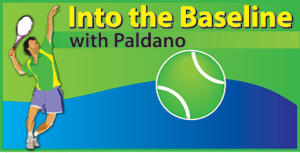Sand court dance and European tennis
View(s):Europe so far, amidst disturbances and administrative changes, is holding out serene life good enough to conduct the sporting events to completion. Competition structure WTA, ATP and others are milestone in the professional tennis. Sand court tennis of Europe are attractive to players. They appear from all parts of the world. Top end players are rationing their effort to last the European segment of their professional commitment. Big known cities of Europe are the winners, for summer tourism and sports.
Carlos is back
 In Rome last week, Carlos Alcaraz of Spain and Jasmine Paolini, an Italian, walked away winning the titles. Significant but small in recognition. For Alcaraz it is to regain, reassert ability and to reposition in the ATP challenge. Injury and absence from in professional tennis has a price to pay, a bigger one to re-enter the ranks.
In Rome last week, Carlos Alcaraz of Spain and Jasmine Paolini, an Italian, walked away winning the titles. Significant but small in recognition. For Alcaraz it is to regain, reassert ability and to reposition in the ATP challenge. Injury and absence from in professional tennis has a price to pay, a bigger one to re-enter the ranks.
World No.1 Jannick Sinner even after his three months WADA suspension is still on top. In Rome last week, Sinner played his first event after suspension. Alcaraz beat him in the final. Scores were very high in favour of Alcaraz. They were tired and happy to finish the match fast to be ready for the second Grand Slam event in Paris, the French Open. Mental and physical status quo of players remains to dictate decisions.
Players have their own issues. Position in ranking contributes to major segment of their income. Number one position commands lot of benefits. That is the way it looked to me. Clocking the number of events to be eligible for ranking is a not east at all.
Italian Jasmine Paolini
For the Romans, Paolini broke the drought of Italian women’s tennis. An Italian won the title after four decades. There were two Italian finalist in the last 40 years. Rafaella Reggi was the last Italian to win the title in Rome in 1985 at the age of 20. Sara Errani reached the final in the recent times. Before that, Rome title went to Annalisa Bossi early as in 1950.
Paoline, current No.4 in the WTA ranking, beat WTA No.2 Coco Gauff of USA. It is Paolini’s agility won her the title. The court made of burnt clay had very large pieces as opposed to be ground down. Settling down on that type of court is a challenge. Many good players, especially among the men went out of the event in the early rounds. To be ready for the next is Paris.
In Paris, court particles, generally ground burnt clay, does not retain water. There is no standards in court making. Courts can induce major tactical, foot stability issues and strain the ankles and knees. These days, strap-ups are standard feature on tennis players. [Alcaraz is strapped from mid-calf to mid-thigh] TV coverage give good coverage to see best of tennis on screen.
Contribution to development
Many countries are in a crossroad situation too long when it comes to prominent player development. In modern sports, developed being correct will not provide effectiveness.
The fast indoor courts of Scandinavia and northern Europe does not permit the stroke-making dance. Tactics is their catchword and speed their ingredient. In the past 30 years, northern Europe and Canadian wintering plains have rolled out more players than the tropics. Sunbelt development slows the player and use less muscular strength to hit the ball.
Indoor advantage
Wintering countries with their indoor courts are fast, in fact are superfast demands out of balance stroke making. For this achievement, core-stability is critical and is the catchword. All ATP and WTA women players in the past two decades have shown highly evolved dynamic balance. The speed of the game has skyrocketed. There is no time in tennis for progressive construction of strokes. Most strokes in professional tennis are in full flight. This is the development of modern tennis. Gym machines have replaced calisthenics, strength with weights
and speed with multiple alternatives.
Aerobic capacity of the player, which enhances recuperation between strokes and points, are still in the realm of the old school. Pretty complicated to comprehend and reminder that we still the model of Africa’s Lucy Tameru.
Local events and padel tennis
Keeping tennis in the country will face very challenging times. The club formula shows very little revival energy. Para tennis activity is picking up and it is too social oriented, however with health benefits. Certainly a form of early tennis development. They are combination of tennis, squash, table and badminton. Not demanding and with wider range of playing level acceptance. It has the potential to survive. However, time will tell. Europeans tell me that the challenge of interest exhausts too quickly in padel. It is group oriented and not individual. The French Open begins on May 25.
–George Paldano, European and Asian competition player; Coach German Tennis Federation; National coach Brunei and Sri Lanka; Davis Cup, Federation Cup coach, coached ATP, WTA and ITF ranked players in Europe and Asia; Whatsapp +94775448880–


